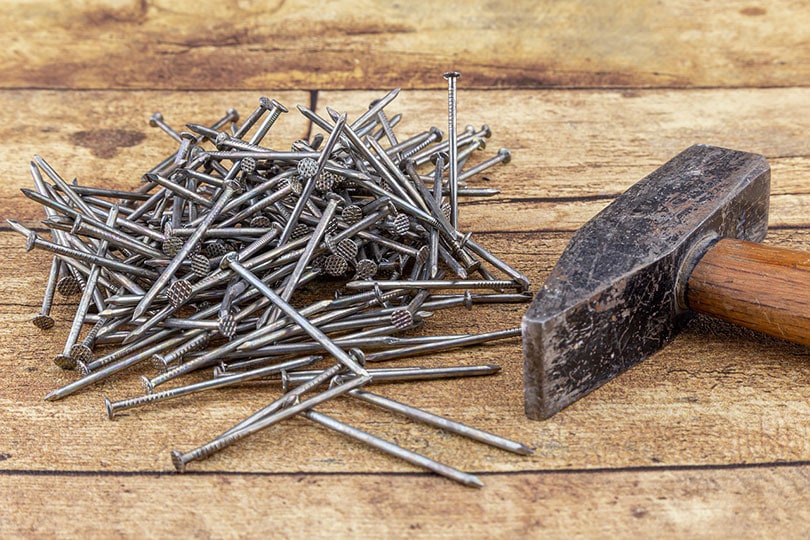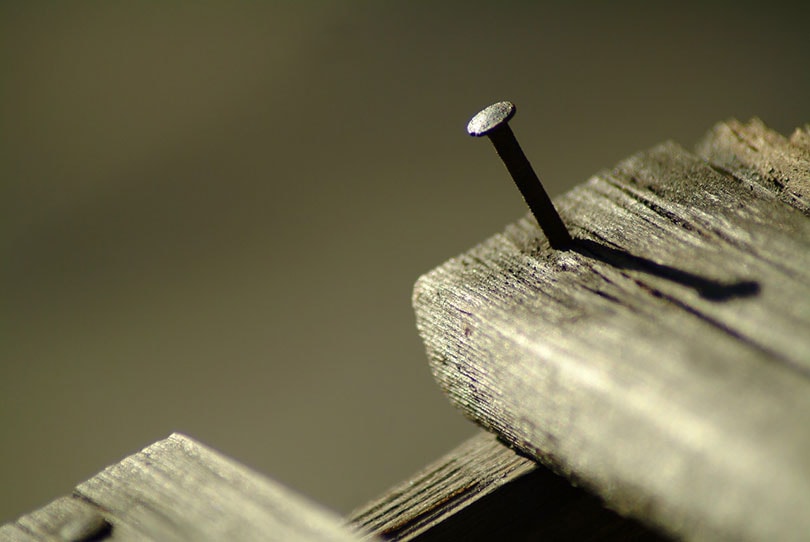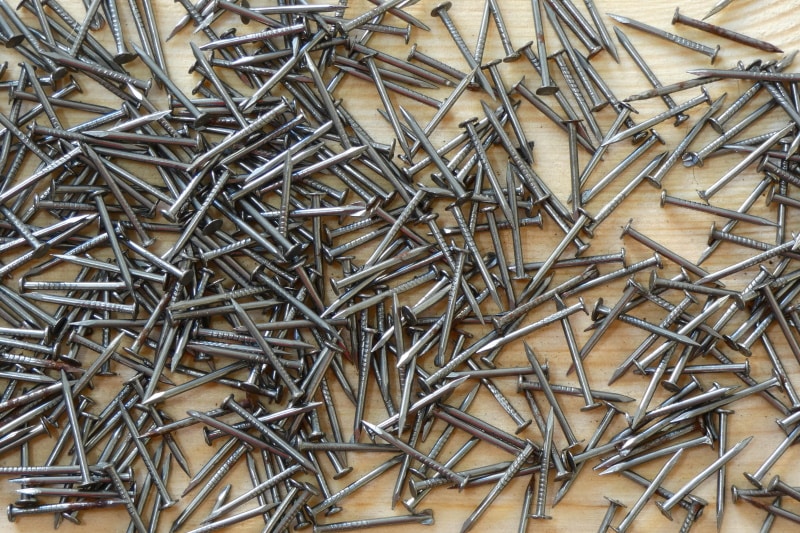9 Different Types of Nails for Wood (With Pictures)
-
Ed Malaker
- Last updated:

If you are a woodworker building a new workshop, it’s common to want to stock up on the supplies that you’ll need frequently. For example, woodworkers can never have enough nails, and there are several different types required to complete various tasks. If you are unsure of what types of nails you need, you’ve come to the right place. Keep reading as we look at several of the most popular types of nails used in woodworking and discuss when to use them.

The 9 Best Types of Nails for Wood
1. Roundhead Nails

- Uses: A strong bond
Roundhead nails are common types of nails used in woodworking, and you will find them in every woodshop. These nails are available in various lengths and thicknesses, but they all look the same, with a long pointy shaft and a long flat head that is easy to strike with a hammer. These nails aren’t as attractive as other varieties, but they provide plenty of strength and won’t slip or loosen over time.
2. Oval Head Nails
- Uses: Strong bond
Oval head nails are similar to roundhead nails, and the primary difference is the shape of the head, which is oval. The advantage of oval head nails is that it’s easier to hammer them below the surface, so they have a more attractive appearance.
3. Casing Nails

- Uses: Finishing work
Kissing nails are like oval head nails, but it’s even easier to drive them below the surface because they have a tapered head instead of a stepped one. Casing nails are similar to finishing nails and are used in similar circumstances, but they are a little larger and provide a stronger bond.
4. Box Nails
- Uses: Flimsy wood
Box nails are similar to roundhead nails, but they have a thin body, which helps prevent them from splitting the wood as you hammer them in, so they are perfect in situations where the wood is dry, thin, or fragile. The downside to box nails is that their thin size means they don’t provide a strong bond.
5. Finishing Nails
- Uses: Finishing work
Finishing nails are similar to casing nails but are usually smaller and have an even narrower head that’s easy to drive below the surface for a more attractive appearance suitable for finishing work. Since these nails don’t have much holding power, woodworkers usually use them for light woods for molding or trim.
6. Tacks
- Uses: Temporary fastener
Most people don’t consider the tack a type of nail, but that’s what it is. It’s essentially an oversized round head with a short body. The large head makes it easy to push in with your fingers instead of a hammer, so it’s a perfect temporary fastener, and it’s one of the most common nails in use.
7. Brad Nails

- Uses: For delicate wood
Brad nails are extremely thin and delicate nails, used in fragile projects like picture frames, birdhouses, and trim. It’s a great choice when you’re worried that you might split the wood, but they are not useful in projects that require more strength.
8. Hardboard Nails
- Uses: For hardboard
Hardboard nails are specialized for use with hardboard, an engineered wood product. While these nails work well with the specialized wood, you won’t see them elsewhere.
9. Duplex Nails

- Uses: Temporary structures
Duplex nails are unique nails with two heads, one below the other. You hammer the nail into the first head for a snug bond. The part of the nail between the first and second head sticks out from the surface, so it’s easy to grab with pliers to pull out later. You won’t find these nails in many household structures, as they are primarily used in temporary buildings, where you want the strength of a good nail with the ability to remove it easily.

FAQs
What Are Nails Made Of?
Manufacturers use steel to make most of the nails in the United States. Steel is inexpensive and strong enough to provide good performance in fastening. Manufacturers can also make nails from other materials, including stainless steel, which improves strength and provides rust resistance. Copper can also eliminate rusting, but it’s softer than steel and more expensive. Inexpensive nails might use iron or aluminum, but you’re better off avoiding these because they might not work well.
What Are Galvanized Nails?
A galvanized nail is usually a steel nail coated with a layer of zinc. This coating creates a protective barrier that protects the nail from rust and corrosion, increasing its natural lifespan. Woodworkers often use galvanized nails on projects intended for the outdoors, where rain and other environmental factors can quickly break down steel.

Summary
If you are a beginning woodworker, a good supply of roundhead, oval head, and finishing nails is a must. You will use each frequently, especially the roundhead, as you’re learning, so you can never have too many. Fortunately, they’re also fairly inexpensive. Once you have more experience and understand the limitations of these nails, you can branch out into the other types.
Featured Image Credit: analogicus, Pixabay
Contents